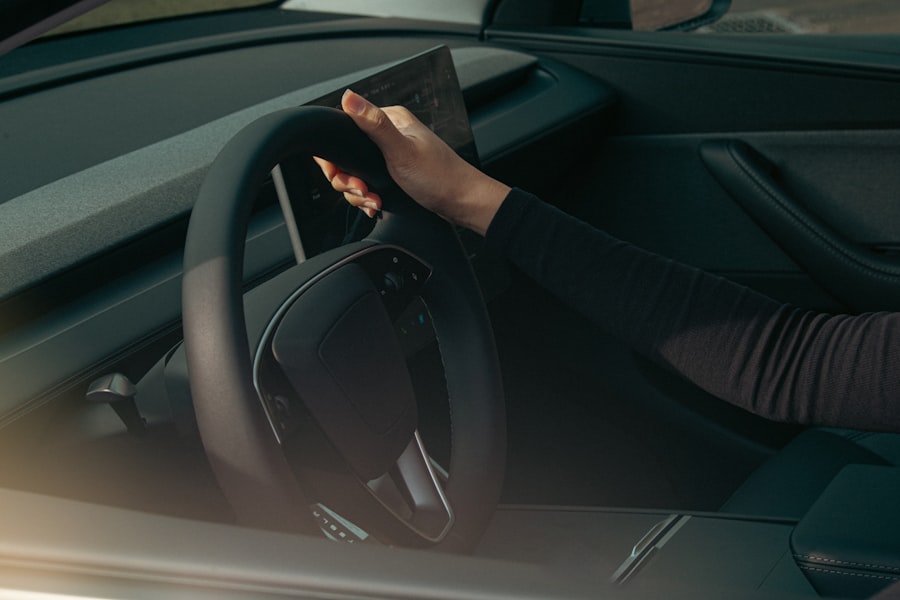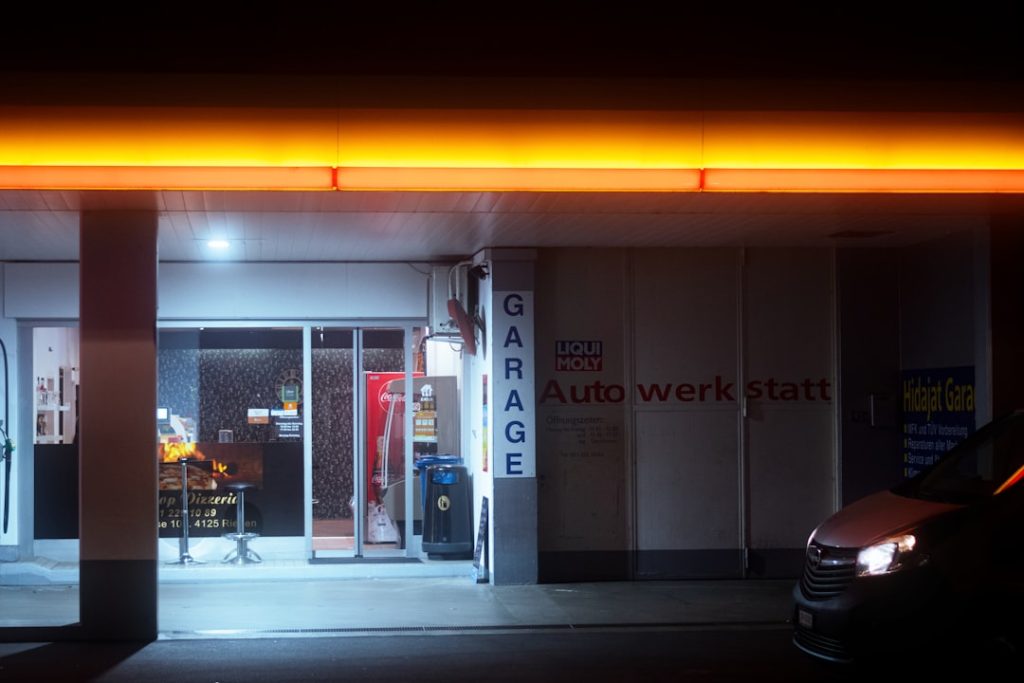Car dealership advertising wields significant influence in the automotive market, shaping consumer perceptions and driving sales. The automotive industry is characterized by fierce competition, with numerous dealerships vying for the attention of potential buyers. Effective advertising serves as a beacon, guiding consumers through the myriad of choices available to them.
It not only highlights the unique selling propositions of a dealership but also creates an emotional connection with the audience. This emotional resonance can be pivotal in a consumer’s decision-making process, as it often transcends mere product features and taps into aspirations and lifestyle choices. Moreover, the power of car dealership advertising extends beyond immediate sales figures.
It plays a crucial role in brand building and long-term customer loyalty. A well-crafted advertising campaign can establish a dealership as a trusted name in the community, fostering relationships that lead to repeat business and referrals. For instance, a dealership that consistently showcases its commitment to customer service and community involvement through its advertising can cultivate a loyal customer base that returns for future purchases and services.
This long-term perspective is essential in an industry where customer retention can significantly impact profitability.
Key Takeaways
- Car dealership advertising has the power to attract potential customers and increase sales.
- Targeting the right audience is crucial for the success of car dealership advertising campaigns.
- Effective marketing strategies can help car dealerships stand out in a competitive market.
- Leveraging social media and online platforms can expand the reach of car dealership advertising.
- Traditional advertising methods can still have a significant impact when used strategically.
Targeting the Right Audience
Understanding the target audience is fundamental to the success of any advertising campaign, particularly in the automotive sector. Car dealerships must identify specific demographics that align with their inventory and services. Factors such as age, income level, geographic location, and lifestyle preferences play a critical role in shaping marketing strategies.
For example, a dealership specializing in luxury vehicles may focus its efforts on affluent consumers aged 30 to 55, while a dealership offering budget-friendly options might target younger buyers or families seeking reliable transportation. In addition to demographic factors, psychographics—such as consumer values, interests, and behaviors—are equally important. A dealership that recognizes the growing trend toward eco-consciousness might tailor its advertising to highlight hybrid or electric vehicle options, appealing to environmentally aware consumers.
Utilizing data analytics tools can enhance this targeting process by providing insights into consumer behavior and preferences. By leveraging these insights, dealerships can create personalized marketing messages that resonate with their audience, ultimately leading to higher engagement rates and increased sales.
Creating Effective Marketing Strategies

Crafting effective marketing strategies requires a multifaceted approach that combines creativity with data-driven insights. One of the most effective strategies for car dealerships is to create compelling narratives around their vehicles. Storytelling can humanize the brand and make it more relatable to potential buyers.
For instance, showcasing customer testimonials or success stories can illustrate how a particular vehicle has positively impacted someone’s life, whether through reliability during family road trips or the thrill of driving a high-performance sports car. In addition to storytelling, dealerships should consider employing a mix of promotional tactics to reach their audience effectively. Seasonal sales events, trade-in promotions, and financing incentives can create urgency and encourage potential buyers to act quickly.
For example, a dealership might run a “Year-End Clearance Sale” that offers significant discounts on last year’s models, appealing to budget-conscious consumers looking for value. By integrating various promotional strategies into their marketing plan, dealerships can maximize their reach and effectiveness.
Leveraging Social Media and Online Platforms
| Platform | Number of Followers | Engagement Rate |
|---|---|---|
| 10,000 | 5% | |
| 15,000 | 8% | |
| 5,000 | 3% |
In today’s digital age, social media and online platforms have become indispensable tools for car dealership advertising. These platforms offer unique opportunities for engagement and interaction with potential customers. By creating visually appealing content—such as videos showcasing new vehicle features or behind-the-scenes looks at dealership operations—dealerships can capture the attention of users scrolling through their feeds.
Engaging content not only promotes brand awareness but also encourages sharing, which can exponentially increase reach. Furthermore, social media allows for targeted advertising that can be tailored to specific audiences based on their online behavior and interests. Platforms like Facebook and Instagram offer sophisticated targeting options that enable dealerships to reach potential buyers who have shown interest in similar vehicles or automotive content.
Additionally, utilizing platforms like Google Ads can help dealerships appear in search results when consumers are actively looking for vehicles online. By combining organic content with paid advertising strategies, dealerships can create a comprehensive online presence that drives traffic to their websites and ultimately leads to sales.
Maximizing the Impact of Traditional Advertising
While digital marketing has gained prominence, traditional advertising methods still hold significant value in the automotive industry. Television commercials, radio spots, print ads in local newspapers, and billboards can effectively reach audiences who may not be as active online. For instance, a well-placed billboard near a busy intersection can capture the attention of commuters who might be considering a vehicle purchase but are not actively searching online at that moment.
Moreover, traditional advertising can complement digital efforts by reinforcing brand messaging across multiple channels. A television ad promoting a special sale event can drive viewers to visit the dealership’s website for more information or to schedule a test drive. Additionally, local sponsorships—such as supporting community events or youth sports teams—can enhance visibility and foster goodwill within the community.
By integrating traditional advertising with digital strategies, dealerships can create a cohesive marketing approach that maximizes their overall impact.
Building Trust and Credibility

In an industry where trust is paramount, building credibility through advertising is essential for car dealerships. Consumers are often wary of high-pressure sales tactics and may have preconceived notions about dealerships based on past experiences or industry stereotypes. To counteract this skepticism, dealerships should focus on transparency in their advertising efforts.
This includes providing clear information about pricing, financing options, and vehicle history reports for used cars. Additionally, showcasing certifications, awards, or positive reviews from reputable sources can bolster a dealership’s credibility. For example, featuring testimonials from satisfied customers on the dealership’s website or social media pages can provide social proof that reinforces trustworthiness.
Engaging with customers through online reviews—both positive and negative—demonstrates a commitment to customer satisfaction and accountability. By prioritizing trust-building in their advertising strategies, dealerships can foster long-lasting relationships with their customers.
Measuring Success and ROI
To ensure that advertising efforts are effective and yielding a positive return on investment (ROI), car dealerships must implement robust measurement strategies. Key performance indicators (KPIs) such as lead generation rates, conversion rates, website traffic, and social media engagement metrics provide valuable insights into the effectiveness of marketing campaigns. For instance, tracking the number of leads generated from a specific ad campaign can help determine which channels are most effective in driving potential customers to the dealership.
Moreover, utilizing tools like Google Analytics can provide deeper insights into consumer behavior on dealership websites. Analyzing metrics such as bounce rates and average session duration can help identify areas for improvement in user experience and content strategy. By continuously monitoring these metrics and adjusting marketing strategies accordingly, dealerships can optimize their advertising efforts for maximum impact and profitability.
Staying Ahead of the Competition
In an ever-evolving automotive market, staying ahead of the competition requires constant innovation and adaptation in advertising strategies. Dealerships must remain vigilant about industry trends and consumer preferences to ensure they are meeting the needs of their target audience effectively. This may involve exploring emerging technologies such as virtual reality (VR) showrooms or augmented reality (AR) applications that allow consumers to visualize vehicles in their own environments.
Additionally, keeping an eye on competitors’ advertising tactics can provide valuable insights into what works and what doesn’t within the market landscape. By analyzing competitors’ strengths and weaknesses, dealerships can identify gaps in their own strategies and capitalize on opportunities for differentiation. For example, if a competitor is heavily promoting electric vehicles but neglecting traditional models, a dealership could position itself as a comprehensive provider of both options to attract a broader customer base.
Ultimately, success in car dealership advertising hinges on a willingness to embrace change and continuously refine strategies based on data-driven insights and market dynamics. By fostering innovation while maintaining core values of trust and customer service, dealerships can thrive in an increasingly competitive environment.



